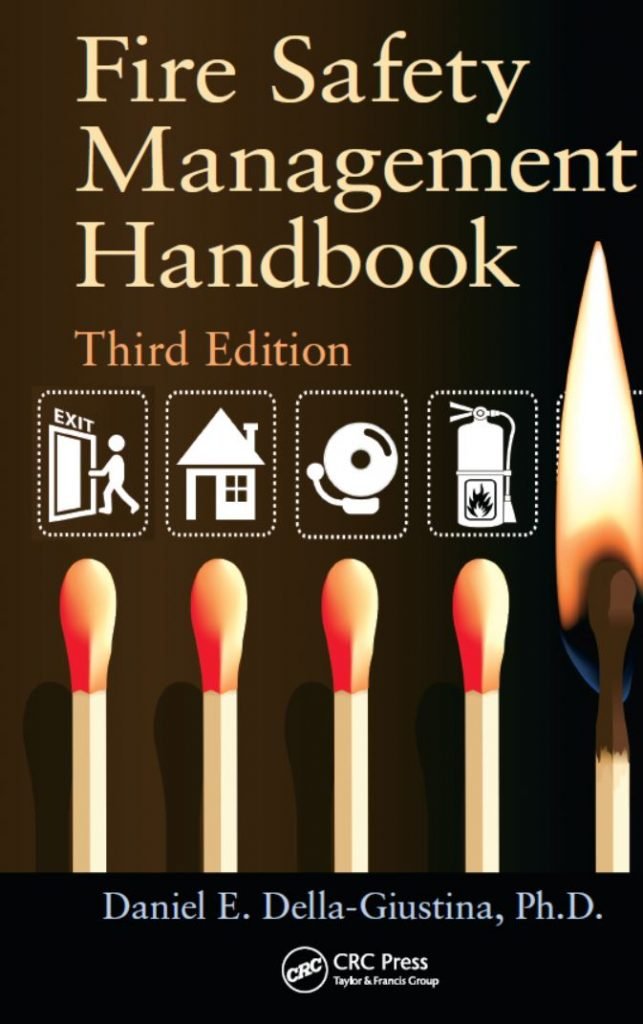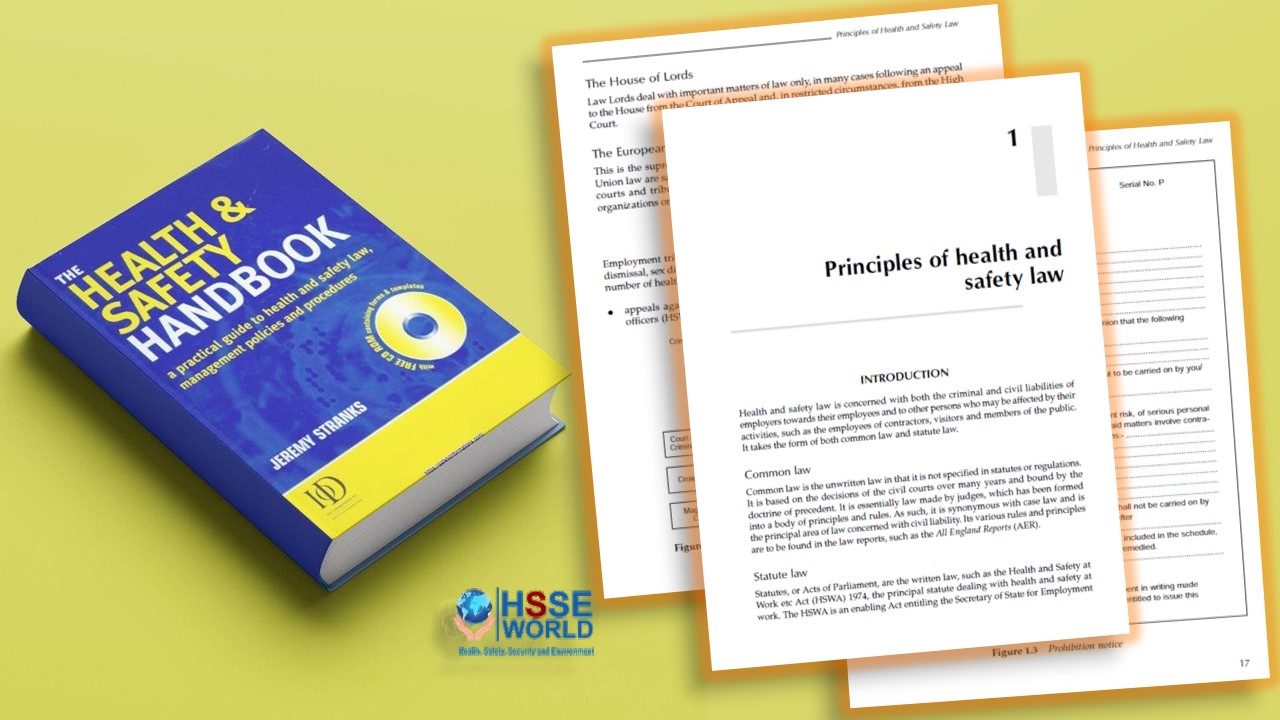Fire Safety Management Handbook 3rd edition Daniel Della-Giustina. The purpose of this book is to present, in an organized and sequential way, how to develop an effective fire safety management program. To determine organizational patterns for fire service operations. Summarize qualifications expected of personnel attached to organizations providing fire services. Recognize the impact that Homeland Security has on fire safety management. National Fire Codes (NFPA) and federal, state, and local legislation and enforcement Available resources.
Since the second edition of this book, some things have not changed and others have.
The need for safety professionals to understand basic fundamentals is essential in hazard recognition, evaluation, control measures, and the standards to ensure compliance with current required fire codes. The safety manager today faces a moral and legal responsibility to the community, worksite, and to the public. Safety managers need an understanding of the duties and responsibilities for which they are accountable.
The primary purpose of the Fire Safety Management Handbook is to integrate a broad field, including the National Fire Codes (NFPA), into a single manuscript that deals with all aspects of the fire sciences.
This text presents the key elements that comprise an effective fire safety management program. It was written for fire safety professionals, safety managers, scientists, and college instructors as a useful reference in dealing with the varied problems of flammable hazardous materials as well as managers who are accountable for fire safety as part of comprehensive safety and/or a risk management program.
Safety programs are typically evaluated based on the results they achieve for their respective organizations. Tangible results of any safety program can be difficult to measure. Over the years, the profession has evaluated safety program effectiveness by measuring the failures produced, such as accident frequency and severity rates, or property loss rates. Measuring safety programs by their failures is counterproductive.
By the time any safety program produces the failures to measure, it is too late for managers to implement activities that could have prevented those failures from occurring in the first place.

While the safety profession has never proven that a direct correlation exists between various safety program activities and achieving favorable program results, safety managers strive to identify possible relationships. Successful safety managers place an emphasis—such as their time and organizational resources on implementing proactive activities that impact the results of their safety programs. Safety program effectiveness should be measured by the quality, rigor, and utility of these activities, as well as their impact on the bottom line.
Having established that an effective safety program emphasizes proactive activities, this text places special attention on the fire safety activities that can achieve the most optimum results. Developing and implementing an effective fire safety management program can:
• Reduce property loss insurance premiums.
• Demonstrate why certain practices are being used.
• Help minimize the financial impact of business interruptions.
• Boost customer service and public images.
• Foster an efficient work environment to help realize quality gains.
• Impact favorably on the profitability of an organization.
• Evaluate building construction.

Special attention has been given to fire safety activities that achieve results. These activities are explained in each chapter.
OBJECTIVES OF THE TEXT
Individuals who utilize this text should be able to:
- Identify agency resources for fire service operations and aid students with information based on the Fire Protection Handbook.
- Determine organizational patterns for fire service operations.
- Summarize qualifications expected of personnel attached to organizations providing fire services.
- Describe the uses and operations of various types of fire control equipment.
- Determine and identify materials considered hazardous.
- Recognize the training and educational experiences needed for fire service personnel.
- Ascertain the components of fire service communications and dispatching.
- Demonstrate accepted management practices needed to establish and improve fire service operations.
- Understand the human response by redefining readiness.
- Recognize the impact that Homeland Security has on fire safety management.
Contents
The Contents in Fire Safety Management Handbook
- Major Organizations in the Field of Fire Safety
- Fire Chemistry
- Essential Elements
- Identification and Control of Materials Considered Hazardous
- Building Construction
- Fire detection systems
- Fire control systems
- Care, Maintenance, and Inspection
- Legal Aspects, Organization, and Legislation
- Emergency Response Planning for Safety Professionals
- The United States Fire Administration
Download the book
More Downloads
- E-Books: Healthcare Hazard Control & Safety Management
- E-Books: Safety, Health and Working Conditions Training Manual
- E-Books: Energy Efficiency in Water and Wastewater Facilities
- E-Books: Fire Service Features of Buildings and Fire Protection Systems
- E-Books: Evaluation of Fire Safety free download
- E-Books: PPE for Chemical, Biological, and Radiological Hazards free
- E-Books: Changing the Workplace Safety Culture free download
- E-Books: Site Emergency Planning Workbook
- E-Books: Load Restraint Guide
- E-Books: Essential Practices for Creating, Strengthening, and Sustaining Process Safety Culture
- E-Books: System Safety Engineering and Risk Assessment
- E-Books: Permit-Required Confined Spaces
- E-Books: Is it Safe to Enter Confined Space?
- E-Books: 5-Minute Workplace Safety Talks
- E-Books: Safety Culture and High-Risk Environments
- E-Books: Practical Guide to Industrial Safety
- E-Books: Slip, Trip, and Fall Prevention for Healthcare Workers
- E-Books: Health and Safety at Work Key Terms
- E-Books: Fundamentals of Process Safety Engineering
- E-Books: Gas Detection Hand Book
- E-Books: Occupational health and safety management systems ANSI-AIHA-z10-2012
- E-Books: Hot Work on Drums and Tanks
- E-Books: Human Fatigue Risk Management
- E-Books: Guidelines for the provision of facilities and general safety in the construction industry
- E-Books: Handbook of Training in Mine Rescue and Recovery Operations ( 2021)
- E-Books: Code of Practice for the Safe Use of Lifting Equipment – Edition 9 (Nov 2019)
- E-Books: Free Forklift Health and Safety Best Practices Guideline
- E-Books: Handbook of Hazardous Chemical Properties
- E-Books: Human Performance Improvement through Human Error Prevention
- E-Books: Principles Of Fire Risk Assessment In Buildings
- E-Books: Investigation of Occupational Accidents and Diseases
- E-Books: Radiation Protection and Safety in Industrial Radiography
- E-Books: Basic Guide to System Safety, Third Edition
- E-Books: Food Safety Management-A Practical Guide for the Food Industry
- E-Books: Safety identification: Escape and evacuation plan signs- ISO 23601
- E-Books: Safety at Work
- E-Books: The Safety-Critical Systems Handbook 4th edition
- E-Books: Fundamental principles of occupational health and safety
- E-Books: Fire Safety Risk assessment Guide – Sleeping Accommodation
- E-Books: Mental health at work series
- E-Books: Live Fire Training: Principles and Practice
- E-Books: Pre-Startup Safety Review Guide
- E-Books: Fire and Emergency Drill Manual and Building Inspection Guide
- E-Books: Health and Safety: Risk Management 5th edition
- E-Books: Fire Protection systems -Third edition 2021
- E-Books: Fire Safety Logbook templates
- E-Books: From Accidents to Zero
- E-Books: Electric Safety Practice and Standards
- Your steps to chemical safety
- E-Books: Ergonomics and Psychology Developments in Theory and Practice
- E-Books: HAZOPS Should BE fun-The Stream-Based HAZOP
- E-Books: Safety Health and Environmental Auditing
- E-Books: A Quick Guide to Health and Safety
- E-Books: Occupational Ergonomics A Practical Approach
- E-Books: Job Hazard Analysis A Guide for Voluntary Compliance and Beyond
- E-Books: Electrical Safety of Low Voltage Systems




